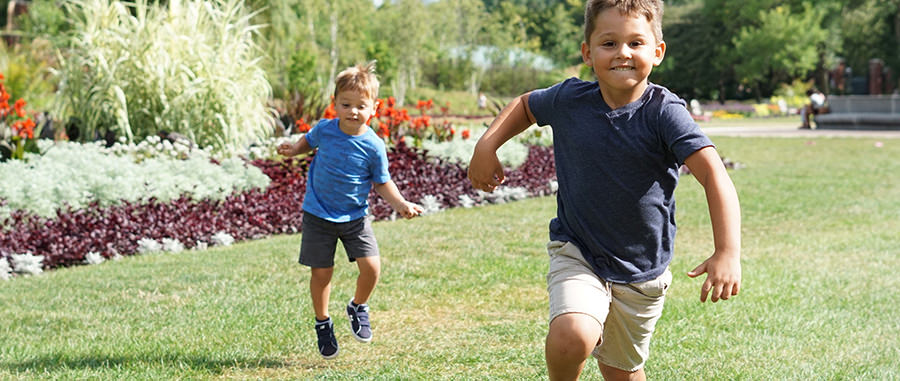With child obesity still an epidemic in the U.S. and reams of research showing both the immediate and long-term benefits of youth exercise, it’s the duty of parents today to make movement and activity a part of kids’ lifestyles, physical therapist and other movement experts say.
And the first step in teaching kids to be active is to be a good role model.
“Physical activity should be reinforced through a child’s innate desire to move,” said exercise science professor Stephen J. Vergilio, PhD in his book, “Active Start for Healthy Kids: Activities, Exercises and Nutritional Tips.” “All children begin life with an innate need and desire to move. Teachers, caregivers and parents should continue to promote this need in a positive, noncompetitive environment on a daily basis.”
And in a country where more than one in six kids between the ages of 2 and 19 are obese, and just one in three are physically active each day, making movement and exercise a daily part of life is a critical habit to help kids form at a young age.
Why?
“Studies have shown the regular physical activity in childhood and adolescence can have numerous benefits for immediate and later-life health,” states an article on Medical News Today. “It can help build healthy bones and muscles, help control weight, and even improve cholesterol levels and blood pressure.”
Strong evidence also exists tying activity with greater academic and social achievement in children. It also helps ward off anxiety and depression at a young age.
According to the Centers for Disease Control and Prevention (CDC), all children and adolescents ages 6 to 17 should participate in one hour of physical activity each day … at a minimum.
“Toddlers and preschool-age children are spontaneous movers, so it is natural for them to have bursts of activity many minutes per hour,” said Bradley Cardinal, PhD, a professor of kinesiology at Oregon State University. “We find that when kids enter school, their levels of physical activity decrease and overall, it continues to decline throughout their life.”
“Early life involvement,” he added, “is imperative for establishing healthy, active lifestyles, self-awareness, social acceptance, and even brain and cognitive development.”
To help your child develop a love of movement and physical activity, physical therapists offer these tips:
Play with Your Kids: Be a leader when it comes to activities with your kids by, first and foremost, making it fun! Starting at a young age, take them outdoors for a game of tag, building forts, playing catch, or to raking up a pile of leaves for jumping. Keep in mind that if you have fun being active, they’ll no doubt imitate the positive vibes.
Go On Adventures: Simple walks and bike rides are fun, but turning them into adventures can give the activities some staying power. Turn the walk into a scavenger hunt, go geocaching instead of just hiking or cycling, or turn a swim in the lake into a rock-collecting and/or skipping competition.
Provide Options & Choice: From toys and games to different parks, facilities and even clubs/leagues, when you give children variety, they’ll be more eager to actively participate in their activities of choice.
Be the Support System: As a parent, be active in helping your child sort through options, connect with others with similar interests (i.e., friends and teammates), and offering the support they need to participate and be successful. Having mom and/or dad on the journey can go far in motivating a kid to stick with and enjoy new activities.
